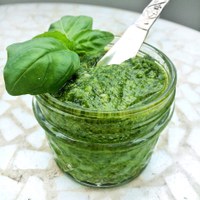Prairie Fare: Be Inspired by Growing Plants
(Click an image below to view a high-resolution image that can be downloaded)
I had just finished a presentation about culinary herbs and had inspired myself to want to grow some things.
As I walked to my car, I realized that the April day was unseasonably warm at 70 degrees. I took my coat off and put it in the backseat of my car. I was on my way to a retail store.
I wanted to buy some plants, or at least look at them.
Then my phone alarm went off saying a tornado warning was in effect. I turned the car around and went home. A few days prior to the warm, windy day, we were shoveling snow.
This spring our weather has been tumultuous, to say the least, with devastating spring snowstorms and power outages.
In the Midwest, the first signs of green grass and budding trees tend to put us in hopeful moods for summer warmth. The scent of someone mowing their lawn leads me outside to put on my gardening gloves.
If you like to grow plants, remember that culinary herbs, like other plants, need enough light, water and nutrients to grow. Most like six hours of sunlight.
Therefore, planting them under a shady tree may not lead to gardening success.
Many herbs attract pollinators such as butterflies and bees, so they are doing more than enhancing your cooking.
Herbs are plants we can cultivate all year, even inside during blizzards. Herbs are easy to grow, have few pest problems and require little care. Backyard critters, such as rabbits, tend to leave them alone.
Herbs can enhance the flavor of food without adding sodium, so they can promote healthful cooking with ample flavor.
Maybe you enjoy basil, dill, rosemary, garlic, chives, cilantro and parsley in your recipes. Herbs such as parsley often are used as garnishes, but you may want to make them an ingredient in your recipes more often.
Be inspired to grow your own fresh herbs. Keep them close to your kitchen so you can snip some fresh herbs to use in your food preparation.
Herbs can be grown in the garden or in containers. Some herbs are “spreaders” and others are “reseeders” (such as dill).
I grew mint last year and I learned firsthand that mint can take over your garden. My mint was a “garden bully” last year and overtook much of a raised bed until I gave it a major haircut. Mint will be in a “time out” this year and planted in a container.
When you prepare herbs, vegetables or fruits, be sure to rinse them thoroughly under running water. Use sharp, clean scissors or a sharp knife to chop into tiny pieces to expose as much surface area as you can.
Besides fresh use, herbs can be frozen or dehydrated.
In culinary use, 2 teaspoons of fresh herbs equals ¾ teaspoon dried herb or ¼ teaspoon powdered herbs.
For strong-flavored herbs such as rosemary, you would use about 1 teaspoon for every six servings. For moderate-flavored herbs such as basil, mint and dill, you would use about 2 teaspoons for every six servings. Mild-flavored herbs such as chives and parsley can be used liberally.
The NDSU Extension Field to Fork website has many resources to explore. Check out the “Field to Fork Resources” section and scroll to the section on herbs for a variety of fact sheets that include recipes and preservation tips.
Sweet basil is a good place to start when you are growing herbs. This recipe and nutrition analysis for basil pesto is courtesy of University of Nebraska-Lincoln Extension. Use basil pesto to add flavor as a pizza sauce, sandwich topping or sauce with hot pasta.
Basil Pesto
4 cups fresh basil, rubbed under cool running water
1/3 cup nuts (walnuts, pine nuts, almonds)
3 teaspoons garlic, minced
½ cup Parmesan cheese
½ cup olive oil
Salt and pepper to taste
Wash hands with soap and water. Rinse basil then pat dry with a paper towel. Place the basil and nuts in a food processor or blender. Pulse until combined. Scrape down the sides with a spatula or spoon. Add garlic and cheese to basil mixture and pulse until combined. Scrape down sides again with a spatula or spoon. While the food processor is running, slowly add half of the olive oil. Stop the food processor and scrape down sides again. Start the food processor and add the remaining oil. Add salt and pepper, if desired. Store leftovers in a sealed container in the refrigerator for up to five days, or freeze for up to three months.
Makes eight servings. Each serving has 180 calories, 18 grams (g) fat, 3 g protein, 3 g carbohydrate, 1 g fiber and 115 milligrams sodium.
(Julie Garden-Robinson, Ph.D., R.D., L.R.D., is a North Dakota State University Extension food and nutrition specialist and professor in the Department of Health, Nutrition and Exercise Sciences. Follow her on Twitter @jgardenrobinson)
NDSU Agriculture Communication – April 21, 2022
Source: Julie Garden-Robinson, 701-231-7187, julie.garden-robinson@ndsu.edu
Editor: Elizabeth Cronin, 701-231-5391, elizabeth.cronin@ndsu.edu




